Mobility scooters emerge as a transformative aid for individuals facing challenges with mobility due to age, disability, or health conditions. They offer a significant boost to quality of life by blending convenience with the ability to travel independently over various terrains. As opposed to crutches, canes, or manual wheelchairs, mobility scooters require less physical exertion, enabling users to preserve their energy for daily tasks and social engagements.
These electric-powered scooters are designed to enhance independence, allowing people to partake in activities that may have previously been difficult or inaccessible. With features tailored for comfort and ease of use, they empower users to run errands, visit friends, and move around their communities without relying on assistance from others. Such autonomy can have a positive impact on a person's mental well-being, fostering a sense of self-reliance and freedom.
The decision to purchase a mobility scooter often stems from the desire to engage actively in one's lifestyle without the restrictions imposed by limited mobility. It is a carefully considered investment in personal mobility, contributing to a more active, involved, and fulfilling life. As society becomes more inclusive and adaptive to varying mobility needs, the presence and acceptance of mobility scooters in public spaces continue to grow, further supporting the case for their use.
Enhancing Mobility

Mobility scooters offer diverse benefits to those with mobility challenges, providing freedom and independence across various environments. Whether navigating indoor spaces or exploring outdoor settings, these devices address specific mobility needs with efficiency and ease.
Benefits for Indoor Use
Mobility scooters are adept at improving indoor navigation. Their compact designs allow for smooth maneuverability around tight corners and through narrow hallways. Users can move freely within their homes, accessing different rooms without assistance, which fosters a sense of autonomy.
-
Compactness: Ideal for navigating through doorways and between furniture.
-
Freedom: Enables independent access to all home areas without help.
Advantages for Outdoor Mobility
For outdoor use, scooters are engineered with stability to handle varying terrains, from park pathways to mall corridors. A 4-wheel scooter, especially a heavy-duty model, provides enhanced balance and can manage bumps and uneven surfaces comfortably.
-
Stability: Key for safely traversing outdoor terrain.
-
Variety: Range of scooters available to suit different outdoor environments.
Traveling with Ease
Travel scooters and portable mobility scooters have revolutionized the way individuals with limited mobility can explore and travel. These lightweight and foldable vehicles are easily transportable, making them a practical option for those who frequent public transportation or have an active travel schedule.
-
Portability: They can be folded or disassembled for easy transport.
-
Travel-friendly: Designed to be brought on public transportation without hassle.
Support for Physical Limitations
Scooters can provide vital support for individuals with disabilities or those who may rely on walkers, canes, crutches, or oxygen. By reducing the physical strain of moving about, these devices can also contribute positively to a user's mental health by reducing stress and fatigue associated with limited mobility.
-
Reduces Strain: Offers an alternative to traditional mobility aids.
-
Mental Health: Helps alleviate the psychological impact of restricted movement.
Maintaining An Active Lifestyle
Enabling participation in social events and physical activity, mobility scooters assist users in leading an active lifestyle. Users can attend community events, visit parks, and maintain social interactions, which are critical for mental well-being and overall quality of life.
-
Activity Participation: Encourages engagement in community and social events.
-
Mental Well-Being: Supports mental health through increased social interaction.
Choice of Mobility Scooters
The market presents a range of mobility scooters, from lightweight, foldable models fit for travel to heavy-duty scooters designed for rugged terrain. Selecting the best mobility scooter depends on individual requirements, lifestyle, and the primary environment of use.
-
Selection: A wide range to meet varied needs and preferences.
-
Fit for Purpose: Enables users to choose a scooter that best suits their lifestyle.
Medical Considerations and Consultations
A physician may need to evaluate an individual's mobility needs to advise on the most appropriate type of scooter. In some cases, a prescription for a mobility scooter may lead to cost coverage by Medicare, Medicaid, or private insurance.
-
Physician's Advice: Important for identifying the appropriate mobility aid.
-
Prescriptions: Can facilitate financial support for the purchase.
Financial and Insurance Aspects
The cost of mobility scooters can vary widely. However, many find them to be an affordable investment in independence. Certain scooters may be covered by insurance plans, including Medicare and Medicaid, reducing the financial burden for eligible individuals.
-
Affordability: A range of prices to fit different budgets.
-
Insurance Coverage: Often available to mitigate the cost of purchase.
Safety and Comfort Features
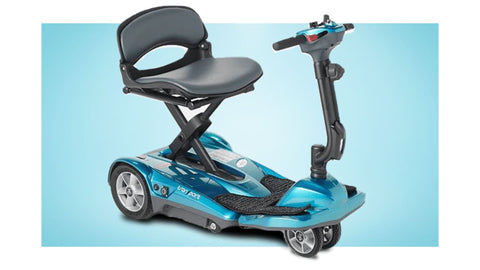
Mobility scooters offer a variety of safety and comfort features designed to enhance user experience. These features ensure that the scooter is not only a viable mobility aid but also a safe and comfortable choice for users with different needs and preferences.
Safety Enhancements
Mobility scooters are equipped with electromagnetic brakes that engage automatically when the throttle is released, ensuring a smooth stop. Additional safety features like lights, a horn, and turn signals make it safer to navigate various environments. Reflective elements and a mounted flag can provide higher visibility to other pedestrians and motorists.
Comfort and Accessibility
For comfort, mobility scooters come with padded armrests and an adjustable steering column to accommodate users of different sizes. Accessories such as a storage basket or cup holder can be added for personal convenience. Their design prioritizes ease of access, making them a more comfortable choice for individuals who might find traditional mobility aids cumbersome.
Scooter Stability and Control
Stability is critical, especially for three-wheeled models. Anti-tip wheels help prevent the scooter from tipping over. The stability of the scooter, combined with responsive controls, gives users the confidence to maneuver their vehicle safely.
Support and Assistance
Heavier duty scooters offer the highest weight capacity, providing support for users who require it. Maintenance and service are generally minimal, but essential to ensure the scooter remains a reliable form of mobility. Users should consider the availability and accessibility of service options when selecting a scooter.
Design for Different Environments
Suspension and tire size are key for scooters that will be used outdoors or on rough terrain. A larger tire diameter and generous ground clearance allow for a smoother ride over obstacles. For indoor use, smaller tires and a tighter turning radius improve maneuverability in confined spaces.
Selecting the Right Fit
The right fit can greatly affect the user's experience with a mobility scooter. Factors like the scooter’s weight capacity, the width of the armrests, and the height of the steering column should be considered to suit the user's size and build. Moreover, choosing between three and four-wheeled models can impact the comfort and stability of the ride, particularly during turning.
Technical Specifications
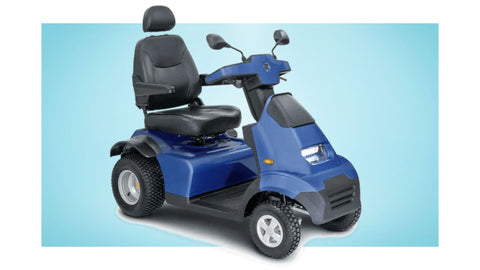
When considering the purchase of a mobility scooter, it's important to pay close attention to their technical specifications. These specifications include battery capacity, scooter performance measures like speed and range, portability, as well as the mechanical aspects and the differences between various models.
Battery and Charging Features
Battery type: Most mobility scooters are equipped with either sealed lead-acid (SLA) batteries or lithium-ion batteries. Lithium-ion batteries typically offer a lighter weight option with a longer lifespan.
-
Charge time: The time it takes to fully charge a mobility scooter's battery can vary, usually ranging from 4 to 8 hours.
-
Battery charge and range: The average battery range of a mobility scooter might differ, with many capable of traveling 10 to 15 miles per recharge, while some heavy-duty models may offer ranges up to 25 miles or more.
Scooter Performance
Speed: A typical mobility scooter's speed can range from 4 to 8 mph, but will vary depending on the model and intended use, such as indoor or outdoor.
-
Maneuverability and turning radius: Smaller scooters usually have a tighter turning radius, making them ideal for indoor use, whereas larger, 4-wheel scooters may offer increased stability outdoors.
-
Performance: Consider the terrain where the scooter will be used; some scooters are designed for flat surfaces while others are better suited for varied outdoor terrain.
Portability and Storage Solutions
Foldable and disassembled options: Many travel scooters can be easily disassembled or are foldable, dividing into lighter, more manageable pieces for transport.
-
Storage when not in use: Foldable scooters and disassembled parts should require minimal space, fitting into car trunks or closets.
-
Scooter lift: For scooters that are not easily disassembled, a scooter lift might be necessary for transport, which is an additional factor to consider.
Understanding Scooter Mechanics
Differentiation between mobility scooters and electric wheelchairs: Mobility scooters generally offer a steering tiller and are designed for individuals who can walk short distances, while electric wheelchairs are joystick-controlled and intended for users with more limited mobility.
-
Heaviest piece: When looking at foldable or disassembled models, the weight of the heaviest piece is crucial for understanding ease of transport.
Evaluating Different Models
Travel scooters vs. heavy-duty scooters: Travel scooters are typically lightweight and compact, ideal for short trips and indoor use, while heavy-duty scooters often have larger tires and higher weight capacities suited for varied terrains and prolonged use.
-
4-wheel scooter vs. smaller scooter: A 4-wheel scooter generally offers greater stability, which is important for outdoor use, whereas a smaller, more compact scooter is better for navigating narrow spaces indoors.
Making a Purchase Decision
Before committing to a mobility scooter, it's critical to consider multiple factors ensuring one's choice delivers on both quality of life enhancements and financial soundness. Research and comparison are the cornerstones of an informed purchase in the mobility scooter market.
Comparing Brands and Manufacturers
Metro Mobility, Pride Mobility, and Shoprider represent some of the industry's trusted manufacturers. One should investigate these brands thoroughly, focusing on the durability of tires, effectiveness of suspension systems, and the inclusion of safety features like lights. Reviews and consumer reports can offer insights into the manufacturers' reputations for quality products.
Assessing Overall Value and Quality
The overall value of a mobility scooter is measured by its quality relative to its price. Features such as a sturdy frame, reliable battery life, and ease of maneuverability directly impact a scooter's quality. It's crucial to find a balance between affordable pricing and the high-grade components that will withstand regular use and meet mobility needs.
Considering the Long-Term Costs
The initial cost is just part of the financial equation. Maintenance, replacement parts, and potential upgrades need consideration. Brands like Mobility Nest provide options with varying warranties and service plans, determining long-term reliability and ongoing costs. It's wise to plan for future expenses to ensure the choice aligns with one's budget.
Finding the Best Deals and Offers
To find the most cost-effective choice, one should compare prices across multiple retailers and watch for special offers or discounts. Online marketplaces and brick-and-mortar stores sometimes provide competitive pricing, and factoring in any shipping or delivery fees is essential for an accurate cost assessment. It’s recommended to seek out bundled deals that may include accessories, further enhancing the value of the purchase.
Accessibility and Legal Considerations

When exploring the purchase of a mobility scooter, it's essential to understand not only the pathways to financing such as Medicare and insurance coverage but also the compliance with accessibility regulations and the legality of their use in various public spaces.
Understanding Medicare and Insurance Coverage
Medicare Part B can cover the costs of mobility scooters under durable medical equipment, provided that a doctor prescribes it as medically necessary. Medicaid policies may differ by state but often include similar coverage. It is crucial for an individual to confirm with their insurance provider as policies vary and may cover different amounts of the scooter’s cost. Private insurance may also provide coverage, and it is advised to review one's plan specifics.
-
Insurance Steps to Coverage:
- Obtain a prescription from a healthcare provider.
- Ensure the chosen scooter meets insurance criteria.
- Submit necessary documentation for approval.
Compliance with Accessibility Regulations
Mobility scooters must adhere to the Americans with Disabilities Act (ADA) regulations when used in public spaces such as parks and malls. The main aim here is to ensure individuals have the same access as everyone else, fostering independence and freedom of movement. Notably, entities must accommodate two-wheeled and four-wheeled mobility scooters in areas open to pedestrian traffic.
-
Key ADA Guidelines:
- Equal opportunity access in public spaces.
- Users should adhere to the same rules as pedestrians.
Legality of Scooter Use in Public Spaces
The legality of mobility scooter use extends to most areas where the public has access. This includes, but is not limited to, parks, malls, and public transportation systems. Users should verify with local authorities regarding specific rules or permits needed, as stipulations can vary. Mobility scooters are often welcomed on public transportation, provided they do not impede normal operations.
-
Important Legal Notes:
- Always check for area-specific regulations.
- Ensure the scooter does not obstruct public pathways or transportation functions.
Lifestyle Integration
The acquisition of a mobility scooter represents a significant shift toward enhanced independence for individuals with mobility challenges. It seamlessly integrates into daily routines and facilitates access to community events, offering both indoor and outdoor agility while promoting mental health.
Integrating Scooters into Daily Routines
Incorporating a mobility scooter into one's daily routine affords a level of autonomy that can be life-changing. For tasks such as grocery shopping or visiting the mall, the mobility scooter provides the ability to perform these activities without assistance. It serves as a bridge for those who find public transportation challenging, ensuring they can navigate indoor and outdoor spaces with increased comfort.
Participating in Social and Outdoor Events
Mobility scooters break barriers by enabling users to partake in social gatherings and outdoor events such as picnics in the park. These scooters cater to an active lifestyle, supporting their users' desires to remain engaged with their communities. They help maintain vital social connections, contributing to an overall quality of life.
Improving Mental Health through Mobility
The link between mobility and mental health is undeniable. By removing the restrictions imposed by limited mobility, individuals regain a sense of independence. The ability to go outdoors or partake in previously inaccessible activities can lead to significant improvements in mental health. This empowerment through enhanced mobility fosters a positive mindset and a more fulfilling life.
After Purchase: Care and Maintenance
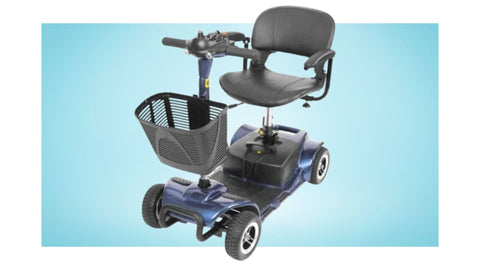
Proper care and maintenance are crucial for ensuring the quality and longevity of a mobility scooter. They should address regular upkeep, swiftly handle any performance issues, and consider enhancements to match user needs. Cost-efficient servicing can also maintain the scooter's value and quality of life for its user.
Regular Maintenance to Prolong Lifespan
Routine service keeps a mobility scooter in top condition. It should include:
-
Battery care: Charge it correctly as per the manual and avoid under or overcharging.
-
Tire inspections: Regularly check for wear and proper inflation.
-
Brake system: Test the brakes for responsiveness.
One may invest in accessories to protect their scooter from weather or wear, like covers or additional baskets for utility.
Troubleshooting Common Issues
When issues arise, timely troubleshooting is key:
-
Battery problems: A common issue is the battery not holding a charge. If this happens, test the battery and replace it if necessary.
-
Beeping sounds: Continuous beeping may indicate being in freewheel mode or a loose connection. Check and secure all connections.
For any complex issues, professional service is recommended for safety and to avoid voiding warranties.
Upgrading and Customizing Your Scooter
Upgrades enhance a scooter and may include:
-
Comfort: Adding a padded seat cover or an adjustable backrest.
-
Convenience: Installing turn signals, a cup holder, or additional storage baskets for personal items.
-
Safety: High-visibility flags or lights for better night-time visibility.
Selecting affordable but high-quality accessories ensures both enhanced function and maintaining a budget.
Resale and Upgrade Options
Consider future needs that may lead to reselling or upgrading:
- The scooter's resale value can be maximized with meticulous maintenance.
- Investigate trade-in programs for upgrading to a newer model that better suits changing mobility requirements, ensuring continued quality of life without unnecessary expenditure.
Conclusion
Mobility scooters offer several advantages that significantly enhance the everyday lives of users. They provide increased mobility, allowing for greater movement in a variety of environments, from indoor spaces to outdoor venues. Through this mobility, individuals experience a marked improvement in quality of life, gaining the ability to engage in community activities and maintain social connections with ease.
Users of mobility scooters often report a heightened sense of freedom and independence, attributes that are integral to personal well-being. No longer confined by limited mobility, they can navigate the world with more confidence and less reliance on others.
-
Independence: Beneficiaries can freely manage daily tasks without substantial assistance.
-
Quality of Life: Participation in desired activities grows, fostering a sense of normalcy and satisfaction.
-
Increased Mobility: Access to otherwise challenging locations becomes a reality.
In essence, mobility scooters are not just transportation devices; they are tools that break down barriers, opening the door to a life with fewer restrictions and more possibilities. They serve as a robust aid to persons facing mobility challenges, underscoring a commitment to self-reliance and active living. Through these merits, it becomes clear that a mobility scooter is more than an investment in a piece of equipment; it's an investment in the user's overall autonomy and engagement with life.
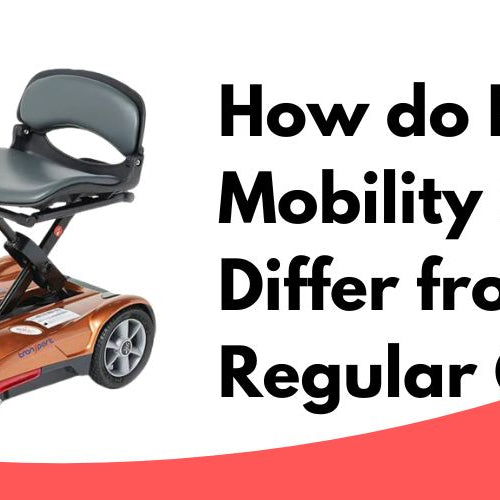








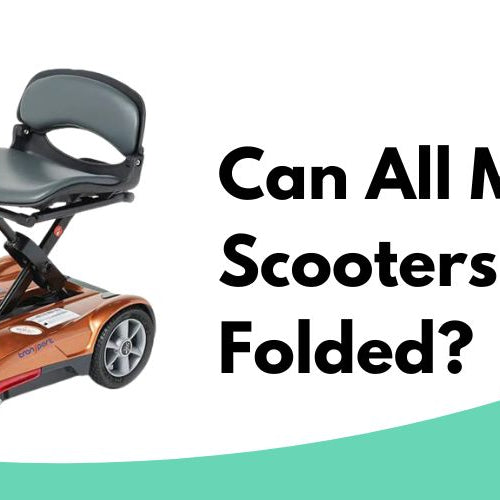
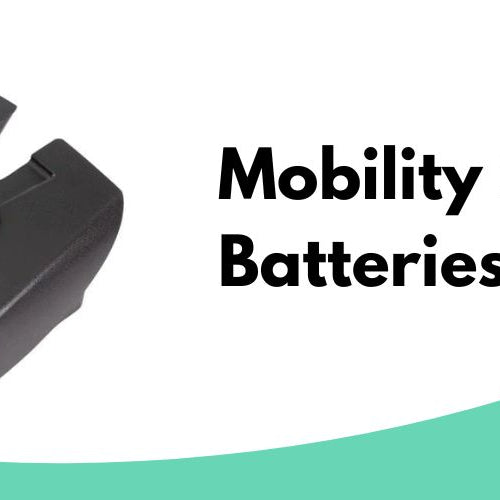
Leave a comment